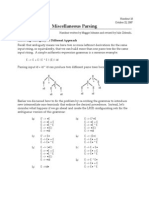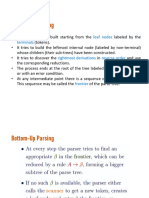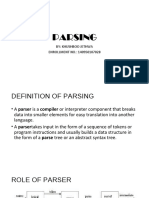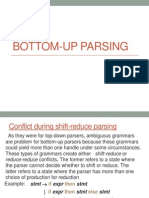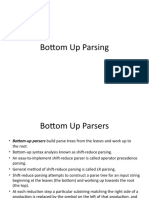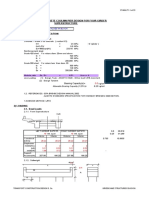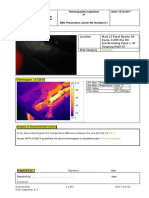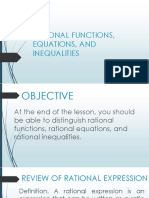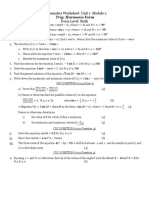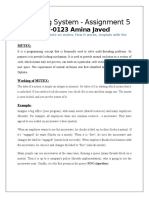0% found this document useful (0 votes)
21 views25 pagesSlides08 LR Parsing
The document discusses Bottom-Up LR Parsing, contrasting it with Top-Down parsing methods. It explains the mechanics of LR parsing, including the use of LR items and the handling of shift-reduce conflicts, particularly in the context of if-then-else statements. Additionally, it touches on error reporting and recovery strategies, as well as other parsing tools like GLR and PEG parsers.
Uploaded by
Rasha Elsayed SakrCopyright
© © All Rights Reserved
We take content rights seriously. If you suspect this is your content, claim it here.
Available Formats
Download as PDF, TXT or read online on Scribd
0% found this document useful (0 votes)
21 views25 pagesSlides08 LR Parsing
The document discusses Bottom-Up LR Parsing, contrasting it with Top-Down parsing methods. It explains the mechanics of LR parsing, including the use of LR items and the handling of shift-reduce conflicts, particularly in the context of if-then-else statements. Additionally, it touches on error reporting and recovery strategies, as well as other parsing tools like GLR and PEG parsers.
Uploaded by
Rasha Elsayed SakrCopyright
© © All Rights Reserved
We take content rights seriously. If you suspect this is your content, claim it here.
Available Formats
Download as PDF, TXT or read online on Scribd
/ 25
